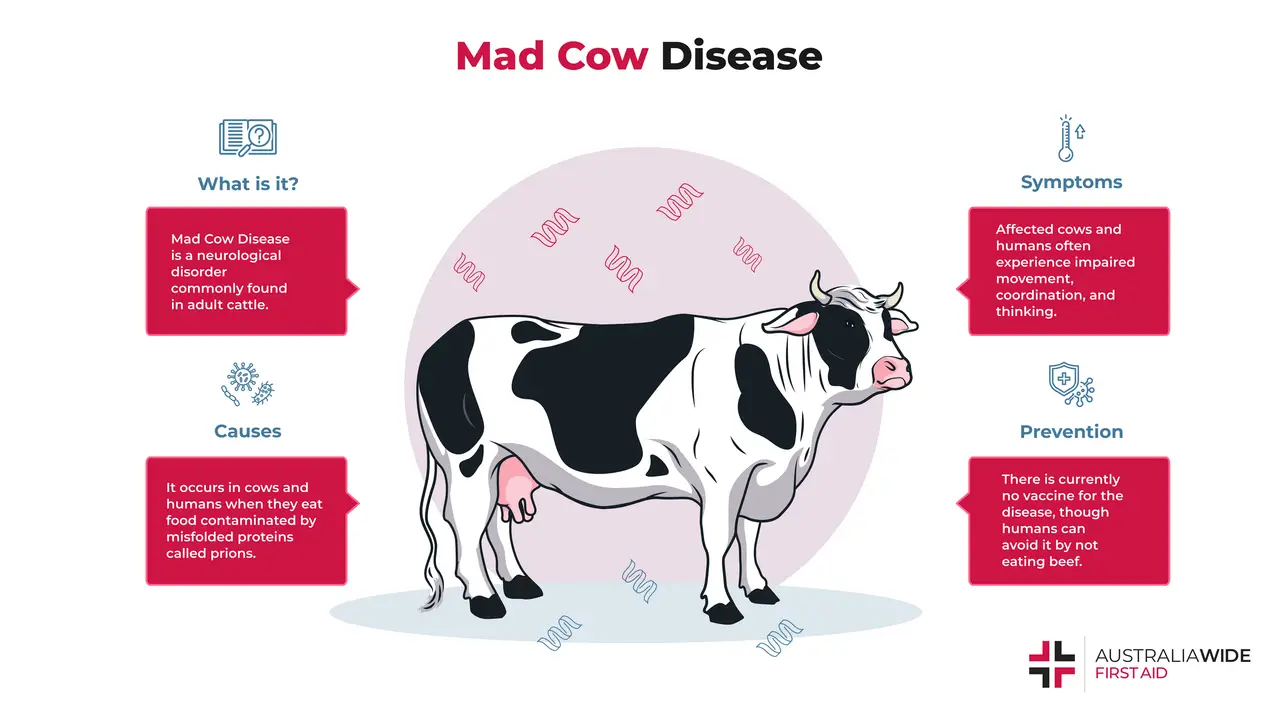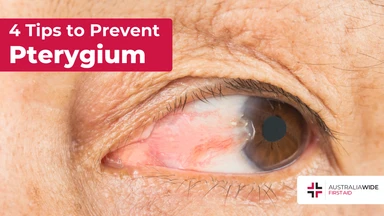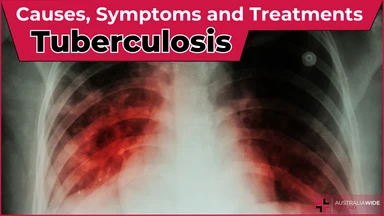Lifting the Lid on Mad Cow Disease


Mad Cow Disease, or Bovine spongiform encephalopathy (BSE), is a disease commonly found in adult cattle.
This fatal disease is transmissible and causes a degeneration of the central nervous system in its host.
It is related to a variant found in humans called variant Creutzfeldt-Jakob disease (vCJD), which is caused by consuming beef products of infected cattle.
Mad Cow Disease, or Bovine spongiform encephalopathy (BSE) is a type of disease that affects the brains of cattle – “bovine” refers to the disease affecting cows, “spongiform” refers to the way the brain of affected cows looks under the microscope, and “encephalopathy” indicates that it is a brain disease. It’s more common name, Mad Cow Disease, comes from the incurable and inevitably fatal and degenerative nature of the disease.
While first found it cattle, there exists a human variant called variant Creutzfeldt-Jakob disease (vCJD) – both disorders are universally fatal brain diseases caused by a prion. A prion is a protein particle that lacks DNA, and it is believed to be the cause of various infectious diseases in the nervous system.
According to the U.S. Food and Drug Administration in 2019, 232 people worldwide have been reported to be infected with vCJD – and unfortunately none of those infected have survived. It was suspected that the majority of those who suffered from this disease most likely lived in the United Kingdom (the disease’s country of origin) for a prolonged period and were infected when living or travelling there during the 1980s to 1990s.
The outbreak of Mad Cow Disease is believed to have originated from the practice of supplementing protein in cattle feed by utilising remains of other animals, also known as meat-and-bone meal (MBM). This involved infectious misfolded proteins known as prions in the nervous system; and by consuming the remains of an infected animal, the disease then spread to those fed on such a diet.
Early suspicions of BSE were from a farm in Sussex in December 1984, however, this was not confirmed until June 1987. By 1989, the British Ministry of Agriculture had put a ban on high-risk food items such as offal from human consumption and widespread fear about the disease had led to a massive drop in demand from British consumers.
While humans can get infected with mad cow disease by eating beef products from an infected cattle, the risk appears to be very small with fewer than 1 case per 10 billion servings. Solid beef pieces are less likely to be contaminated, and milk products are not believed to transmit the mad cow agent. However, a few cases of infection via blood transfusion from an infected donor have been reported – resulting in concern by the general public and official authorities alike.
Mad Cow Disease can affect all age groups and it is very hard to diagnose until the latter stages of the disease. vCJD is a degenerative disease, meaning that it gets worse over time. This can cause damage on the brain tissue and lead to the symptoms listed below:
In the early stages of the disease, patients often have symptoms related to the nervous system such as loss of coordination and problems with vision. As the disease runs its course, dementia develops. vCJD is fatal, usually within 13 months of the onset of symptoms.
Mad Cow Disease is extremely rare in most countries other than the United Kingdom and Europe due to the proximity to the disease's origin. No known cases of vCJD have occurred in Australia to date with Australia being one of the 16 countries in the world assessed by the European Union as meeting all criteria for the lowest geographical BSE risk level.
However, if travelling to the United Kingdom or Europe, the best way to avoid vCJD is to avoid eating beef during your travels. The disease is not contagious and cannot be transmitted by being around someone infected with the disease. Practices such as avoiding beef products should be sufficient in avoiding contracting this fatal disease.
In terms of treatment, there is no known cure for vCJD that has been shown to stop the progression of the disease. Instead, treatment is focused on supporting the patient and easing other symptoms as the disease progresses. Doctors may provide walking devices, drugs that can help ease pain, or other supportive care to increase the patient’s quality of life.
Introduced in December 2000, Australia had previously enforced a ruling that banned people who had spent six months or more in the United Kingdom between 1980 and 1996 from donating blood due to the vCJD outbreak.
While there were fears surrounding the transmission of vCJD through blood transfusion, it has been recently reported that it is now safe for people living in the United Kingdom at the time to do so again. Modelling performed by Lifeblood and UNSW Sydney’s Kirby Institute has found that the removal of this rule is safe to do so.
According to UNSW Sydney’s Kirby Institute, the risk of contracting vCJD from blood transfusions is 1 in 1.4 billion – indicating that there is little to worry about due to the low risk and vigilance conducted by the researchers in ensuring the safety of all blood donors and receivers.
As fatal as Mad Cow Disease is, the risk of contracting the disease via consuming beef products or blood transfusions is very low.
Researchers have shown that there is little to worry about, as contracting this disease is very rare. However, it doesn’t hurt to be careful when eating beef products and to ensure your beef comes from a farm that practices healthy and hygienic practices.
To learn more about identifying, managing and preventing the symptoms of various health conditions, check out our First Aid Course, as you never know when you may need to save a life in an emergency.

May 1, 2025
Pterygium, also known as surfer's eye, is an ocular surface disease characterised by a growth of limbal and conjunctival tissue over the cornea. Fortunately, you can practice many eye health habits to help prevent the development of pterygium and other risks.

April 3, 2025
Tuberculosis is a severe bacterial infection that mainly affects the lungs and other parts of the body, including the nervous system. This contagious disease can quickly spread in crowded areas when an infected person coughs, talks, or sneezes.

February 13, 2025
Melioidosis is a bacterial infection caused by Burkholderia pseudomallei, a microorganism found in soil and water. This infection is often underdiagnosed due to symptoms mimicking many other illnesses. As such, awareness is critical for those living or working in affected regions.